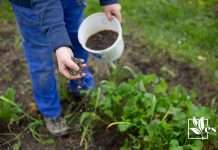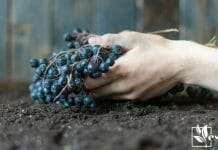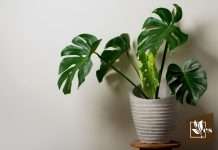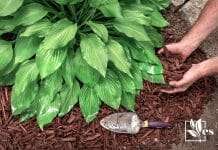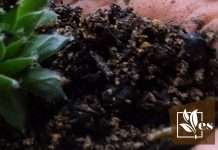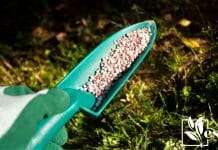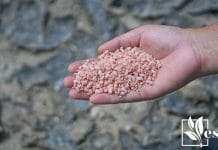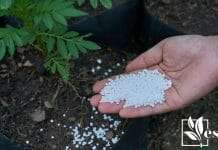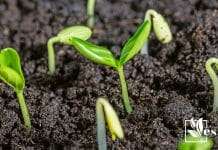Perlite is a common component in gardening, especially when it comes to preparing soil mixtures for plants. It is a volcanic glass that is heated until it pops, creating a lightweight, sterile, and porous material that improves soil drainage and aeration. I have found it to be particularly useful in my own gardening endeavors for promoting healthy root growth and preventing waterlogging, which can be detrimental to the plants. Its neutral pH level also makes it suitable for use in various types of gardens.

While some gardeners may wonder about the safety of using perlite, particularly in vegetable gardens where the produce may be consumed, studies and various uses of perlite suggest it is safe. Perlite is often included in organic gardening practices due to its natural origins and benefits to soil structure. However, as with any material used in gardening, it’s important to handle perlite properly; inhaling the fine dust is not recommended, so wearing a dust mask during its application is a simple precaution to ensure safety.
JUMP TO TOPIC
Exploring the Benefits of Perlite in Garden Soils
As a seasoned gardener, I’ve found that integrating perlite into soil mixtures does wonders for plant health and productivity. Perlite’s capacity to enhance aeration and moisture balance is invaluable for fostering an ideal root environment.
Perlite’s Role in Aeration and Drainage
Perlite, a type of volcanic glass that’s expanded and then milled into a lightweight, white substance, is a powerhouse when it comes to aeration and drainage. Its structure is porous, offering pockets of space in the soil which, in turn, boosts the oxygen levels that roots can access. Oxygen, as you may know, is crucial to root respiration and overall plant vigor.
💥 My Experience with Perlite
When I introduce perlite to my garden soil, I notice a significant prevention of compaction, which often plagues densely packed soils like clay. This prevention of compaction helps to ensure that water drainage is consistent, avoiding waterlogged conditions which can spell disaster for roots.
How Perlite Improves Plant Growth
Integrating horticultural perlite into my garden mix has proven to positively impact plant growth. Its benefit lies not only in soil structure but also in water retention and nutrient availability. While perlite helps excess water drain away, it still manages to hold onto the right amount of moisture, ensuring that plants do not dry out too quickly.
My use of perlite as a soil additive directly affects nutrient retention; it holds onto valuable nutrients and then releases them over time for root uptake. This slow release of nutrients supports more consistent plant growth and health throughout the growing season.
Comparing Perlite with Other Soil Amendments
In my experience, understanding the differences between soil amendments such as perlite and vermiculite, as well as alternatives to perlite in hydroponics like diatomaceous earth, can significantly impact your gardening success, especially when it comes to aeration, moisture retention, and the overall structure of the soil mix.
Perlite Versus Vermiculite
Perlite and vermiculite are both used to enhance soil conditions, but their properties cater to different needs. Perlite is volcanic glass heated until it pops and is excellent for aeration and drainage, making it ideal for preventing soil compaction, especially in clay soils. It is inert, meaning it doesn’t degrade over time or alter the chemical balance of the soil mix.
Vermiculite is a hydrated laminar mineral that, unlike perlite, is better for water retention. It absorbs and holds more water, which can be particularly useful in dry conditions. However, vermiculite tends to compact over time, which reduces its effectiveness in improving soil aeration. This difference makes perlite a preferred choice for those practicing organic gardening, as it maintains good airflow around plant roots.
Diatomaceous Earth and Hydroponics Alternatives
In hydroponic gardening, where soil is not used, perlite serves as an inert medium. However, when considering alternatives, diatomaceous earth is often compared. Diatomaceous earth is a natural, silica-rich material that is used for its ability to regulate moisture in a hydroponic system. It’s also known for its pest-deterrent qualities.
Other hydroponic alternatives include expanded clay pebbles and coco coir. Clay pebbles are another inert option that provides excellent drainage and can be reused, whereas coco coir, which is made from the fibrous husks of the coconut, holds moisture well and is a renewable resource, making it attractive for sustainable gardening practices. It’s essential when choosing a medium for hydroponics to consider the specific water, nutrient, and support needs of the plants you’re growing.
Practical Gardening Applications of Perlite
Perlite is a versatile material in gardening, known for its ability to improve drainage and prevent soil compaction. It’s especially beneficial for container gardening and starting new plants from seeds or cuttings.
Enhancing Container and Raised Bed Gardening
Perlite is a remarkable addition to potting soil for my container and raised bed gardens. The porous nature of perlite allows for excellent aeration, preventing root rot by ensuring excess water drains away efficiently. I often mix perlite into my potting soil to achieve a balance that holds just enough moisture while providing roots with the oxygen they need.
In raised beds, perlite improves soil structure, especially in clay-heavy soils that tend to compact easily. Here’s how I incorporate perlite into raised bed gardening:
| Application | Benefits | Perlite Ratio |
|---|---|---|
| Soil Amendment | Improves drainage, aerates soil | 1 part perlite to 4 parts soil |
| Top Dressing | Prevents soil compaction | Spread a 1-2 inch layer |
Seed Starters and Rooting Cuttings with Perlite
For seed starting and rooting cuttings, perlite plays a crucial role in my gardening practice. Its neutral pH and sterile environment are perfect for encouraging healthy root growth. I have found that a mix of perlite and peat or compost creates an ideal seed starting medium that retains water yet also drains excess to prevent damping-off disease.
When rooting cuttings, I rely entirely on perlite. The excellent aeration reduces the chance of decay and supports quick root development. To do this, I use the following straightforward method:
- Fill a pot with perlite.
- Moisten the perlite.
- Insert the cutting.
This simple, no-fuss environment has a remarkable success rate in developing robust roots ready for transplantation into more nutrient-rich potting mixes.
Health, Safety, and Environmental Considerations
When incorporating perlite into food soil, it’s imperative to be mindful of health and safety as well as the environmental impact of this soil amendment. As a gardener, I consider these factors critically to ensure safety and sustainability in my practice.
Best Practices for Gardener’s Health and Safety
Perlite is a form of volcanic glass that is expanded through heating to create a lightweight, sterile material used for its ability to retain water and improve soil structure. While perlite is considered safe and is an inert, inorganic material, there are precautions I take to minimize risk:
-
Avoid Inhalation: Fine perlite particles can irritate the respiratory system. I always wear a dust mask when handling perlite to prevent inhaling the fine dust.
-
Eye Protection: To prevent eye irritation from perlite dust, wearing safety goggles is a practice I never skip.
-
Skin Sensitivity: Although uncommon, if you have sensitive skin, it may be wise to wear gloves when handling perlite to prevent potential irritation.
Here’s a warning for gardeners:
Although it’s a natural material, always handle perlite with care, using appropriate protective gear to prevent any health issues related to dust exposure.
Environmental Impact and Sustainability of Perlite
Perlite’s environmental profile is relatively benign, especially as it’s a natural, inorganic product that doesn’t decay or release pollutants. The expanded form of perlite improves soil aeration, which can enhance root growth and plant health – leading to more productive gardens. However, some concerns exist:
-
Non-renewable: Perlite is derived from a finite resource, volcanic rock. Hence, the sustainability aspect comes into consideration.
-
Processing: Expansion of perlite requires high temperatures, indicating significant energy expenditure during processing.
To address sustainability, I focus on:
-
Reusability: I often reuse perlite in my potting mixes to extend its life and reduce the need for continuous mining. Rinsing and sterilizing perlite between uses makes it a reusable asset in my garden.
-
Sourcing: I opt for perlite that is OMRI listed, ensuring it meets organic production standards and supports sustainable practices.
Here’s a quick answer to the main question regarding perlite safety:
Yes, perlite is safe to use in food soil when proper health precautions are taken, and can be part of an environmentally conscientious gardening practice.



